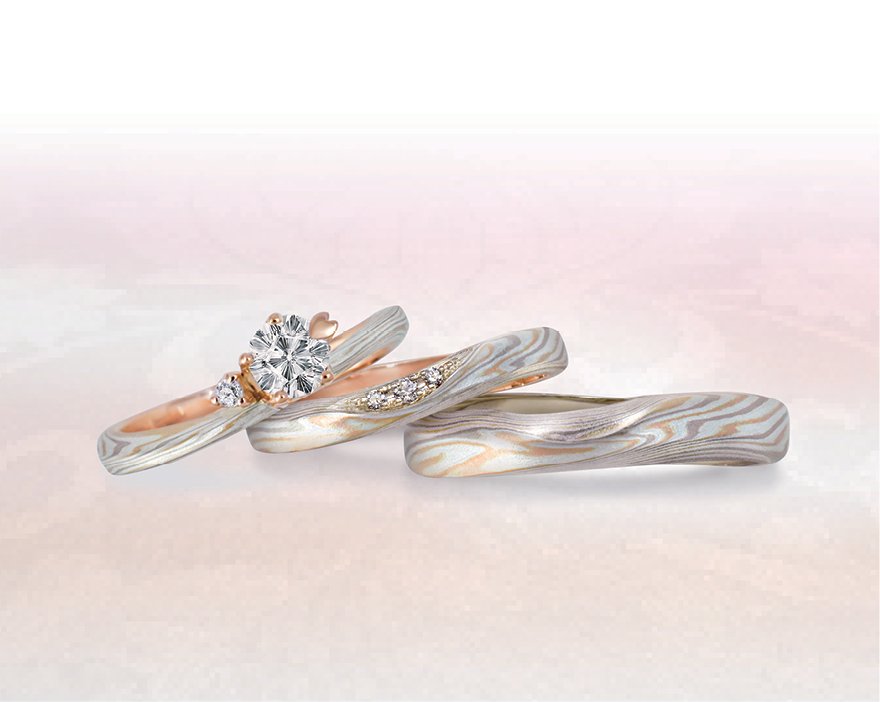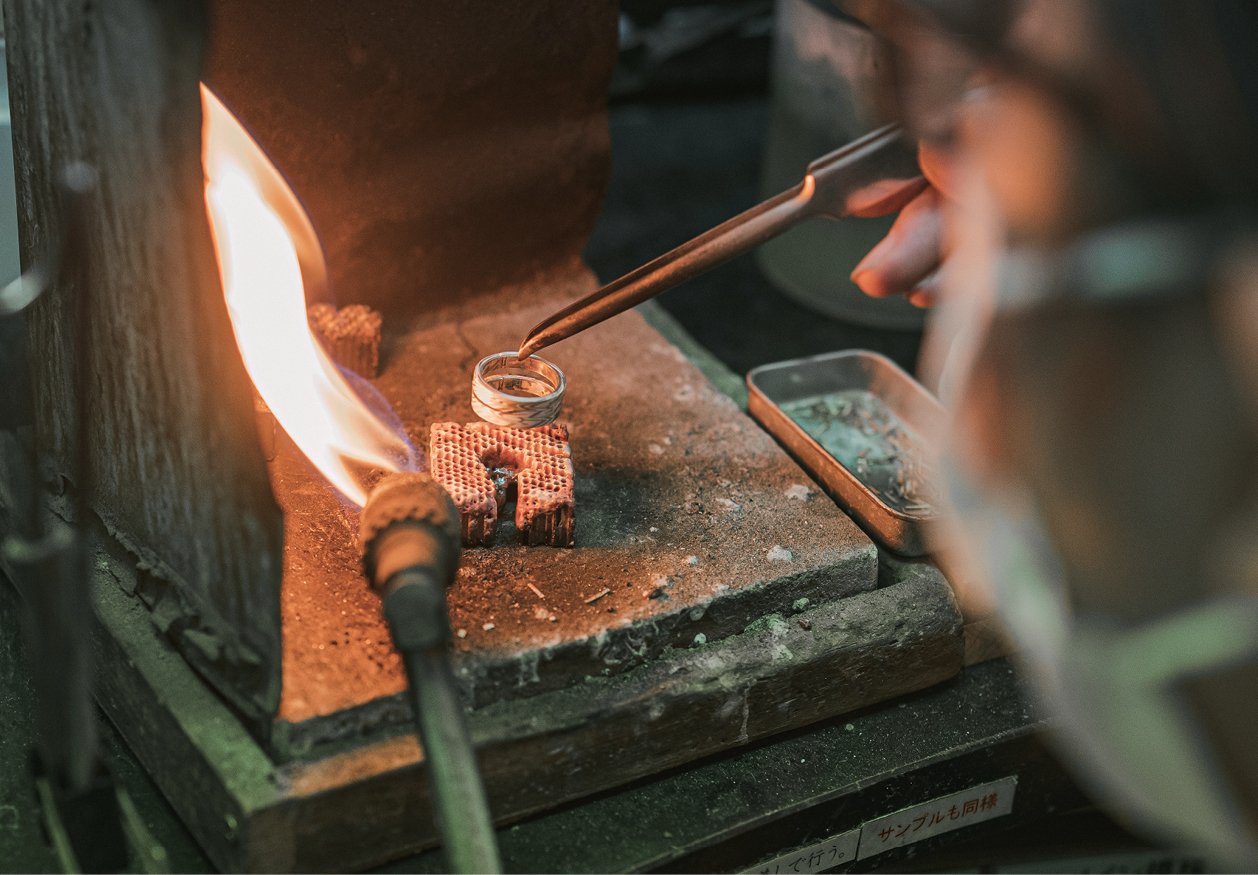Crafting Beauty, One Ring at a Time
A jeweler in Tokyo has been turning heads with a technique that channels traditional metalworking to celebrate romantic unions in a unique way. Mokumeganeya Co., Ltd. creates custom-made wedding and engagement rings as well as exquisite jewelry with aesthetics that recall the Edo period (1603-1868).

Just as weddings are a unique union between two people, the rings are made to order—each bespoke pair created according to the customer's preferences—but they generally have a beautiful wood grain pattern formed via the heritage mokume gane technique, which involves layering, fusing, twisting, carving, and treating different metals. The pattern once forged can never be repeated, making the wedding rings an apposite artistic embodiment of love and matrimony.
The traditional techniques and handmade craftsmanship of the company are in contrast with their up-to-date sales platform and customer service. Virtual consultations and online quotations are easily accessible in English and other languages on their user-friendly website. Engagement and wedding rings are shipped all over the world to satisfied customers. All rings come with a lifetime warranty and digital records are kept of all the customers. Also, customers can now register on the Mokumeganeya app and get updates and information about cleaning and maintenance of their rings.
Mokumeganeya was founded in 1997 by metalwork artist and CEO Takahashi Masaki. During his studies at Tokyo University of the Arts, he discovered and was fascinated by the wonders of the traditional technique of mokume gane, a term that literally means woodgrain metal and signifies both the fabrication procedure and examples of the technique.
About 400 years ago after a time of upheaval, Japan entered an extended period of peace. Samurai began to value swords that were increasingly decorative rather than purely practical. The craftsman Shoami Denbei began making tsuba (sword guards) by layering metals of different colors on top of one another, yielding beautiful patterns in spirals and arabesques. Over time the technique was refined, producing exquisite mokume gane sword fittings in shakudo (an alloy of gold and copper), copper, gold, and silver. After an 1876 decree abolishing the wearing of swords, the method was applied to everyday items such as smoking and writing implements, but was gradually lost as Japan pursued a program of rapid industrialization.
Fast-forward to the 1990s when Takahashi sought to revive the technique. After painstaking efforts, he managed to reproduce a Denbei kozuka, the handle for a small knife in a sword fitting, as well as other items similar to those of the Edo period. Takahashi decided to apply the art to contemporary jewelry, and his creations have met with great success. He has produced unique concepts such as Tsunagaru Katachi— fashioning a pair of rings from the same mokume gane plank and then ceremonially separating and exchanging them during weddings. Takahashi's work has gone on to receive a range of accolades and awards both in Japan and overseas.

In 2020 the company was selected to be part of the Tokyo Metropolitan Government's Edo Tokyo Kirari Project. The initiative is based on the concept of "Old meets New." It showcases the treasures of Tokyo—businesses in the capital that display excellence in craftsmanship, quality, and design as well as adopting new approaches to meet present-day customer needs. Together, these businesses embody the Tokyo Brand; one that can be appreciated both domestically and overseas, and carry its treasures forward into the future.
As it has gained recognition, Mokumeganeya has continued to grow, opening numerous outlets domestically as well as one in California. Partly due to the pandemic, there is an increased focus on online sales. "Inquiries from other parts of Asia are on the rise," says Takahashi. "We are increasing specialization in order to give a new generation of craftspeople a chance to show their skill and artistry, as well as increase the popularity of work involving handmade craftsmanship."
Tokyo is home to many artisans drawing upon the rich legacy of traditional Japanese art forms to create innovative products and services. This mix of old and new is one of the elements that make the capital one of the most dynamic cities in the world.




